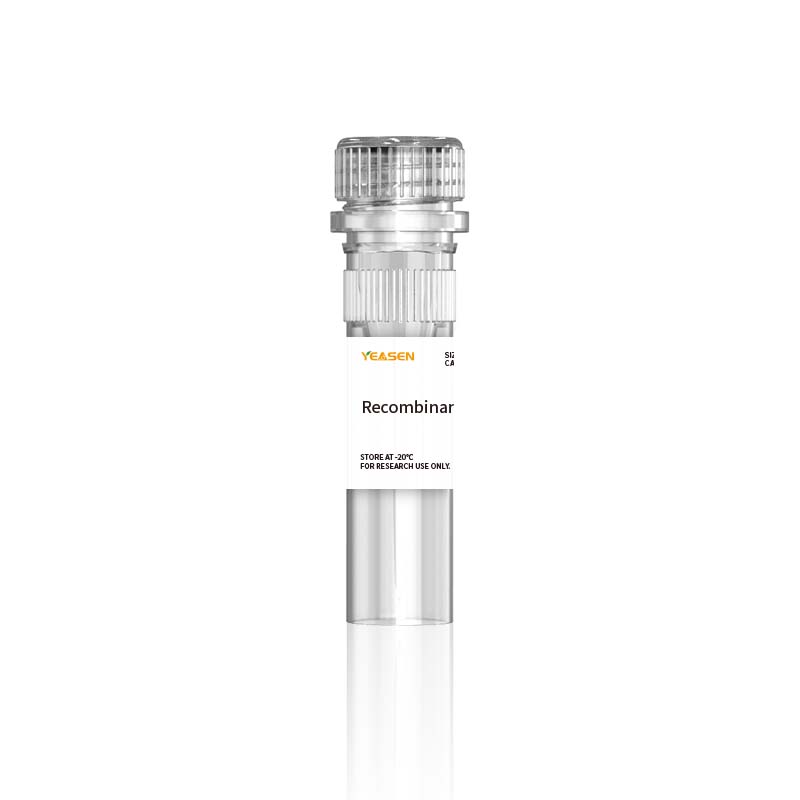Description
Human B7 homolog 3 (B7-H3) is a member of the B7 family of immune proteins that provide signals for the regulation of immune responses. Other family members include B7-1, B7-2, B7-H1/PD-L1, B7-H2, and PD-L2. B7 family proteins are type I transmembrane immunoglobulin (Ig) superfamily members that contain extracellular Ig V-like and Ig C-like domains with a short cytoplasmic tail. Among the family members there is about 20 - 40% amino acid (aa) sequence identity. B7-H3 was initially reported to be a 316 aa type I transmembrane precursor protein that contained a signal sequence, an extracellular region with one V-type and one C-type Ig domain, a transmembrane segment and a short cytoplasmic tail. Subsequent studies have identified a second 110 kDa form whose precursor is 534 aa in length. Termed 4IgB7-H3 or B7-H3b, this molecule has two additional Ig-like domains (one Vtype and one C-type) and shows a ubiquituous expression pattern. It would appear that the human 4Ig form is the principal, if not the only form of B7-H3. Its precursor contains a 26 aa signal sequence, a 435 aa extracellular region, a 31 aa transmembrane domain, and a 42 aa cytoplasmic tail. The four Ig-like domains alternate between V-type and Ctype, and apparently are the consequence of a V-C type tandem duplication. B7-H3b is expressed on dendritic cells as well as activated T, B and NK cells.
Specifications
|
Synonyms |
B7-H3; CD276; PSEC0249; 4Ig-B7-H3; UNQ309; PRO352; B7 homolog 3; CD276 |
|
Uniprot No. |
Q5ZPR3.1 |
|
Source |
Recombinant Human B7-H3 (4Ig)/B7-H3b Protein is expressed from HEK293 Cells with hFc tag at the C-terminal. It contains Gly27-Thr461. |
|
Molecular Weight |
Approximately 73.4 kDa. Due to glycosylation, the protein migrates to 80-110 kDa based on Tris-Bis PAGE result. |
|
Purity |
> 95% as determined by SDS-PAGE and HPLC. |
|
Activity |
ELISA Data: Immobilized Human B7-H3 (4Ig) , hFc Tag at 5μg/ml (100μl/Well) on the plate. Dose response curve for Biotinylated Anti-B7-H3 Antibody, hFc Tag with the EC50 of 44.3ng/ml determined by ELISA. |
|
Endotoxin |
< 1.0 EU per 1μg of the protein by the LAL method. |
|
Formulation |
Lyophilized from 0.22 μm filtered solution in PBS (pH 7.4). Normally 5% trehalose is added as protectant before lyophilization. |
|
Reconstitution |
Centrifuge tubes before opening. Reconstituting to a concentration more than 100 μg/mL is recommended (usually we use 1 mg/mL solution for lyophilization). Dissolve the lyophilized protein in distilled water. |
Storage
The product should be stored at -20~-80℃ for 1 year from date of receipt.
2-7 days, 2 ~8 °C under sterile conditions after reconstitution.
3-6 months, -20~-80℃ under sterile conditions after reconstitution.
Recommend to aliquot the protein into smaller quantities when first used and avoid repeated freeze-thaw cycles.
Note
1. Avoid repeated freezing and thawing.
2. Please operate with lab coats and disposable gloves, for your safety.
3. This product is for research use only.
Product Data


Payment & Security
Your payment information is processed securely. We do not store credit card details nor have access to your credit card information.
Inquiry
You may also like
FAQ
The product is for research purposes only and is not intended for therapeutic or diagnostic use in humans or animals. Products and content are protected by patents, trademarks, and copyrights owned by Yeasen Biotechnology. Trademark symbols indicate the country of origin, not necessarily registration in all regions.
Certain applications may require additional third-party intellectual property rights.
Yeasen is dedicated to ethical science, believing our research should address critical questions while ensuring safety and ethical standards.

